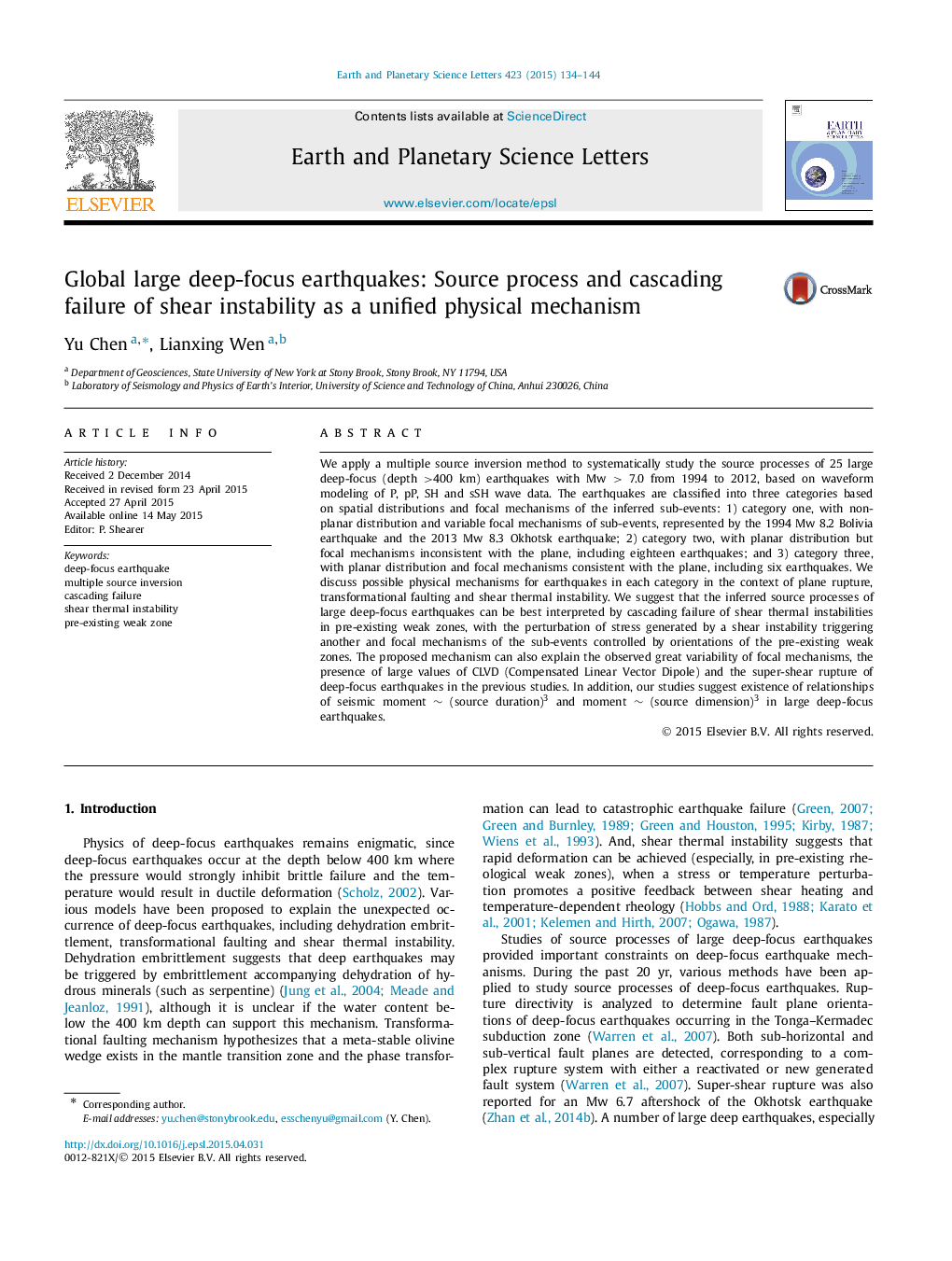| کد مقاله | کد نشریه | سال انتشار | مقاله انگلیسی | نسخه تمام متن |
|---|---|---|---|---|
| 4676974 | 1634733 | 2015 | 11 صفحه PDF | دانلود رایگان |
• We model global large deep-focus earthquakes using P, pP, SH and sSH waveforms.
• Most of the earthquakes cannot be modeled on a single fault plane.
• We suggest a cascading failure of shear instabilities as a unified mechanism.
• Shear instability triggers another with perturbation of static or dynamic stress.
• Focal mechanisms are controlled by orientations of pre-existing weak zones.
We apply a multiple source inversion method to systematically study the source processes of 25 large deep-focus (depth >400 km) earthquakes with Mw > 7.0 from 1994 to 2012, based on waveform modeling of P, pP, SH and sSH wave data. The earthquakes are classified into three categories based on spatial distributions and focal mechanisms of the inferred sub-events: 1) category one, with non-planar distribution and variable focal mechanisms of sub-events, represented by the 1994 Mw 8.2 Bolivia earthquake and the 2013 Mw 8.3 Okhotsk earthquake; 2) category two, with planar distribution but focal mechanisms inconsistent with the plane, including eighteen earthquakes; and 3) category three, with planar distribution and focal mechanisms consistent with the plane, including six earthquakes. We discuss possible physical mechanisms for earthquakes in each category in the context of plane rupture, transformational faulting and shear thermal instability. We suggest that the inferred source processes of large deep-focus earthquakes can be best interpreted by cascading failure of shear thermal instabilities in pre-existing weak zones, with the perturbation of stress generated by a shear instability triggering another and focal mechanisms of the sub-events controlled by orientations of the pre-existing weak zones. The proposed mechanism can also explain the observed great variability of focal mechanisms, the presence of large values of CLVD (Compensated Linear Vector Dipole) and the super-shear rupture of deep-focus earthquakes in the previous studies. In addition, our studies suggest existence of relationships of seismic moment ∼ (source duration)3 and moment ∼ (source dimension)3 in large deep-focus earthquakes.
Journal: Earth and Planetary Science Letters - Volume 423, 1 August 2015, Pages 134–144
